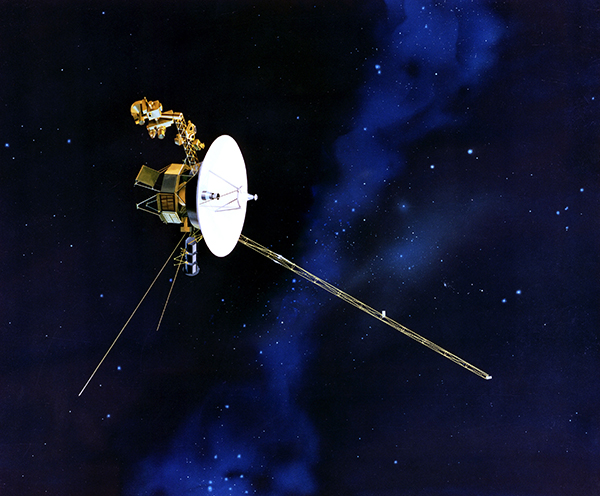
by Sara E. Pratt Monday, December 9, 2013

The Voyager spacecraft launched in August and September of 1977 and spent more than 11 years exploring Jupiter, Saturn, Uranus and Neptune before heading off toward interstellar space in 1989. Scientists think it arrived, 23 years later, in August 2012.
San Francisco - There is a possibility that Voyager, the U.S. spacecraft launched in 1977, which is thought to have left the heliosphere and entered interstellar space last year, could still be "inside," said Ed Stone, Voyager project chief scientist, today at the annual meeting of the American Geophysical Union in San Francisco.
After much speculation last year about whether and when Voyager had entered interstellar space, scientists analyzing new data from the craft last fall reported in Science that several parameters, including plasma densities, electron densities and cosmic rays changed significantly on Aug. 25, 2012. Voyager scientists were expecting to see changes in the data when the craft passed through the heliopause, the boundary between interstellar space and the heliosphere, the region of space that is under the influence of the solar wind.
“Now that we have new, key data, we believe this is humankind's historic leap into interstellar space,” Stone said in a statement released by AAAS earlier this fall. “The Voyager team needed time to analyze those observations and make sense of them. But we can now answer the question we've all been asking: Are we there yet? Yes, we are.”
Today, Stone discussed the data that Voyager scientists have received since then. In March 2013, there was another onset of much denser, cooler interstellar plasma. "It's a non-trivial change, a factor of 10 higher," Stone said. "It was clear we were in a much denser media." Other parameters continue to indicate the spacecraft is in a new region of space. "On August 25 of last year, the low energy particles disappeared and they did not come back," Stone said.
Although those data imply Voyager has indeed entered interstellar space, Stone said, there are some conditions that could produce those readings even if Voyager were still inside the heliopause — for example, if the spacecraft were inside a magnetic bubble or ridge that could be acting as a conduit from the outside.
The new data also raise several questions, for example, about the heliosheath thickness, which was found to be 30 AU instead of the 50 AU models had predicted (1 AU = 150 million kilometers).
Voyager is now 126 AU from Earth, the farthest a man-made object has ever traveled. Voyager II is a few years behind and expected to reach interstellar space in about three to five years, Stone said. All the intruments currently working are expected to continue operating through 2020, with the last ones shutting down in 2025, and scientists look forward to receiving data in the next few years that could clear up some of these questions.
In the meantime, Stone said, "the voyage continues."
© 2008-2021. All rights reserved. Any copying, redistribution or retransmission of any of the contents of this service without the expressed written permission of the American Geosciences Institute is expressly prohibited. Click here for all copyright requests.